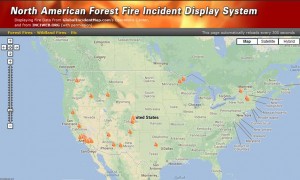US Wildfire Season Upon Us Again
Fire season started early in California this year because the winter rains that usually tide this area over until July or August, barely materialized. Last year, the focus was on wildfires in Colorado and New Mexico. In 2011, Texas was a hotbed of drought and wildfire. Now, all signs point to a destructive 2013 season, given how parched the earth is in the southwest and west, and we are starting to see that materialize.
Typically, this would be the height of the wildfire season in the southwest – New Mexico, Arizona, parts of Colorado, but despite how dry it is and how hot it’s been, a lot of the region had been spared until the big fire started in Colorado this week near Colorado Springs.
According to several scientists on a Climate Nexus panel on Tuesday (Climate Nexus is a strategic communications group dedicated to highlighting the wide-ranging impacts of climate change and clean energy solutions in the United States), major wildfires could occur across the Southwest this year, including in Texas. Now that Texas is in its third year of drought, the state is likely to experience a longer fire season as a result of dry conditions and rising summer temperatures. High fire risk conditions raise the concern that Texas could again experience severe wildfires. Fires on Labor Day weekend in 2011 destroyed more than 1,600 Texas homes.
A draft report by the federal National Climate Assessment and Development Advisory Council (NCADAC) shows that in recent decades, the frequency of large wildfires and the length of the fire season have increased substantially. Earlier spring snowmelts and warmer spring and summer temperatures have increased the risk of fire in the Southwest. Fire models predict that more wildfires will occur in the future, with increased risks to communities throughout the region.
To see this interactive map click here
